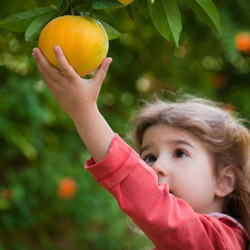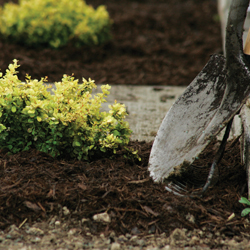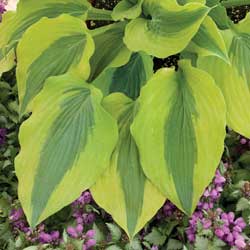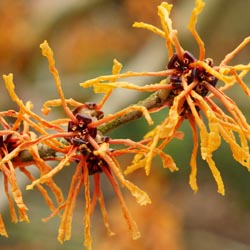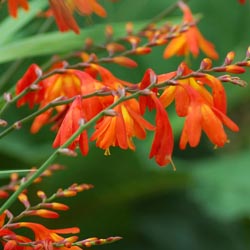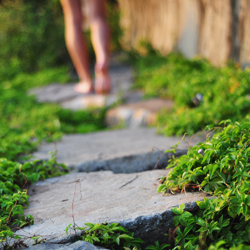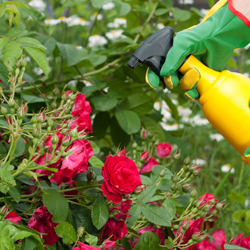Herbal Delights
No matter how cold the temperatures or how deep the snow, you can enjoy the pleasures of herbs this winter season by growing them in your windowsill. Herbs are great for adding zest to any food and are a delicious substitute for salt and artificial flavors. Read More
Spruce Up for the Holidays
From the Fir Family come some of our most beloved Christmas trees, the Colorado, Norway and White Spruce varieties. Both the Colorado and Colorado Blue Spruce have a nice pyramidal shapes with strong limbs that can hold heavy ornaments or light strands. Read More
Making a Terrarium
Hold onto your gardening hats, folks! Remember terrariums? A new trend revitalizing this old style is now better than ever. Creating a theme for your terrarium is easier too, with the all the miniatures now available. Remember those skinny-necked bottles and what a hassle they were? New container styles make terrariums easier to plant, simple to maintain and more beautiful in your home. Read More
Preserving the Harvest
Was it a bumper crop this year? Do you have tasty fruits, vegetables and herbs overflowing your storage? Now that the harvest is in, the decision needs to be made as to what to do with the abundance. Read More
Tips for a Gardening Gift Basket
A gift basket is a great present for any gardener in your life, and is easy to customize to any gardening preferences. With just one trip to the garden center, you can create the perfect gardening gift basket for any special occasion. When to Give a Gardening Gift Basket A gift basket can be a... Read More
Fall Gardener’s Calendar
SEPTEMBER Spray Bonide All-Season Spray on hemlocks to control woolly adelgid. Spruce up the landscape by planting Fall Pansies, Flowering Cabbage & Kale, Garden Mums, Fall-Blooming Perennials as well as Trees and Shrubs. Test your lawn pH to determine if you need to apply lime this season. A 5o lb. bag of Lime will raise... Read More
Plant a Tree This Fall
There are so many reasons to add a new tree to your landscape this fall that it’s hard to find a reason not to. Read More
Fall in Love with Fall Pansies
Ideal for fall gardens, pansies offer a colorful display for almost six months – in the fall when they are planted, in the winter during a stretch of sunny days and again in spring! Winter pansies may be planted anytime starting in mid-September and continuing through October. Read More
The Great Squirrel Battle for the Bulbs
Autumn is the catalog time of year, when gardeners devour and drool over the spring-blooming bulb catalogs, eagerly fantasizing about next year's flowerbeds. Read More
Glorifying Garden Gloves
Many gardeners believe garden gloves are easy to do without. Those of us who love gardening enjoy the feel of soil running through our fingers, and we don't mind the line of dirt under our fingernails. Read More
Choosing a Japanese Maple
We’re certain you’ve heard it numerous times: fall is the best time to buy your Japanese maple. Have you come into the garden center to pick one? Did the varieties overwhelm you? Let us make it easier for you by explaining Japanese maple differences. Read More
Versatile Euonymus
What are your garden's trouble spots? Do you need an evergreen hedge? A tall anchor plant at the back of a deep garden bed? How about an interesting groundcover? Perhaps your garden needs a medium-sized transition plant. Try a euonymus! Read More
Get Started Composting
Fall is an excellent time to start a compost pile with all of the leaves falling, and if you develop compost now, you will have a rich source of organic material for your garden and flowerbeds in spring. Read More
Heavenly Hosta
Heavenly Hostas, their real glory is in their foliage. The thin spikes of purple or white, trumpet shaped flowers appear for several weeks in the summer and are an added benefit to this divine perennial. Read More
Amsonia hubrichtii
Amsonia hubrichtii, commonly known as Arkansas blue star, Arkansas amsonia or threadleaf bluestar, grows 36 inches tall and 36 inches wide in a mounded form. This hardy perennial grows in hardiness zones 4-9 and is a versatile North American native ideal for many landscaping uses in all types of yards and gardens. Amazing Seasonal Interest... Read More
Choosing the Right Flowering Tree
Purchasing a tree for your landscape is an investment that can raise the property value of your home and bring you pleasure, beauty and shade for many years to come. Read More
Summer Sizzles With Crocosmia
There is an excellent assortment of bulbs available for planting this time of year promising a bounty of summer blooms. The thing is, many of these bulbs are not winter hardy. This can create a predicament for gardeners anxious for easy summer flowers but short on time and space to dig and store tender bulbs. Read More
Creepers & Crawlers: Ground Covers for Walkways
The durability of some plants is absolutely amazing. A number of them are so robust that they may even be tread on! These are the plants to choose when filling in the space between pavers, walkways, patios and steps. Placing plants in the gaps of your hardscape will soften its appearance and will keep weeds... Read More
Rose Care Basics
Beginners often become confused with the many recommendations and suggestions for growing roses. However, it is important to start with the basic guidelines for successful rose growing. Roses can thrive under many conditions, but they are sure to grow better, with more luxurious blooms and fewer problems, when you follow the basics. Prepare the Soil ... Read More
Vertical Gardening for Small Spaces
It’s easy to maximize even the tiniest garden space when you look up – and up, and up, and up. Whether you have a balcony, deck, small terrace, raised beds or container garden, vertical gardening is a great way to increase your cultivated ground and enjoy a more abundant harvest no matter how small your... Read More










